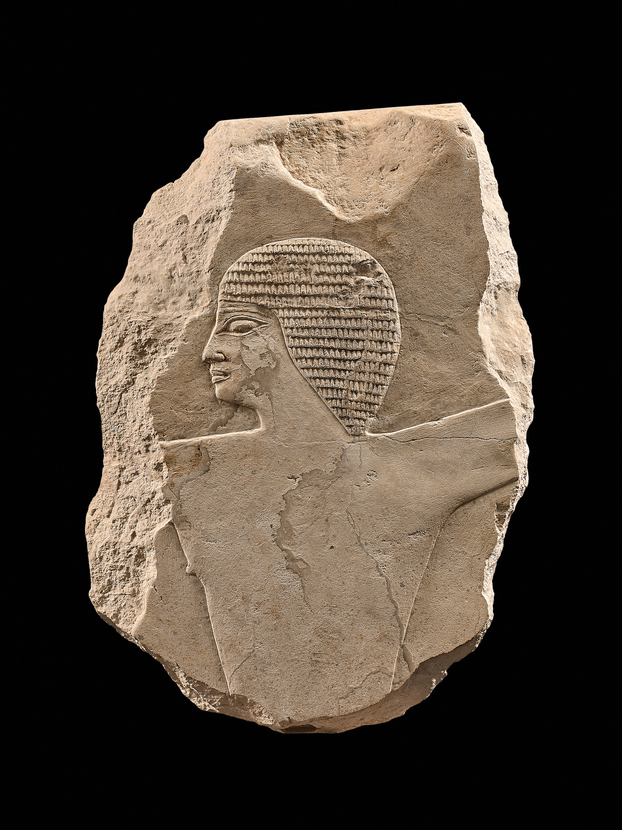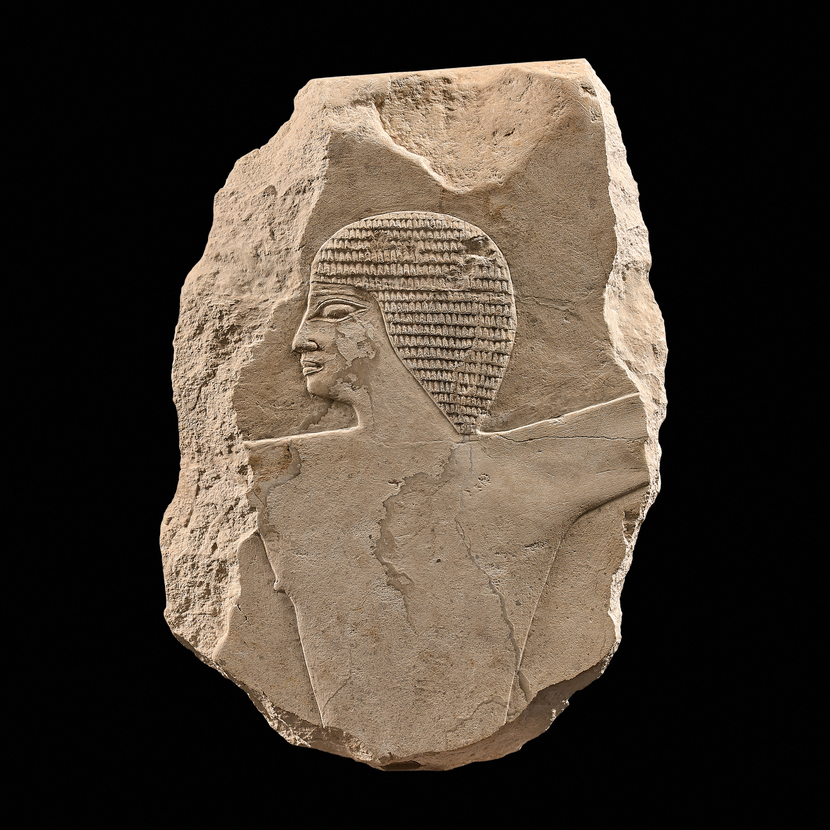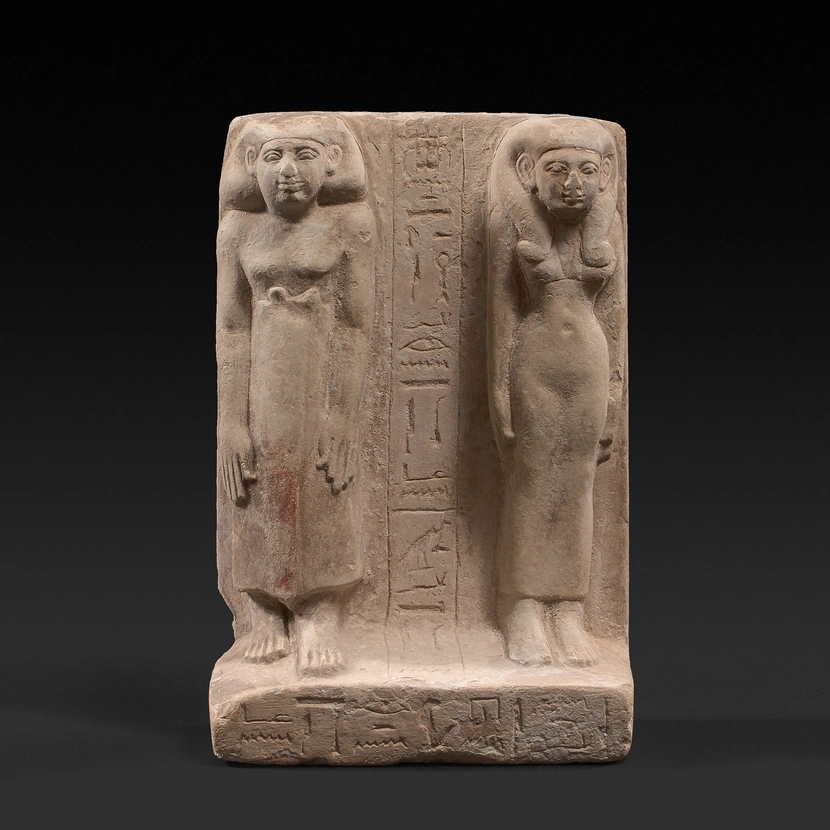Relief with the profil of a man
Relief depicting is the upper half of a man, looking to his left. He is bare to the waist and is wearing a short wig composed of twenty tiers of tight curls.The fragment is stylistically very close to scenes in the mortuary complex of pharaoh Pepi II in South Saqqara and most probably originates from there.
Egypt
Old Kingdom , VI Dynasty, reign of Pepi II, circa 2200 BC
Limestone
Height 27 cm ( 10 5⁄8 in )
Former private collection USA, acquired from Mathias Komor, New York, in the 1960’s, private collection Germany, acquired from Royal-Athena Galleries, New York 2010
J. Eisenberg, Art of the Ancient World, volume XX, 2009, no. 168
John Dorfman, The Lure of Egypt”, Art & Antiques Magazine, volume 33, issue 1 (01-2010)
J. Eisenberg, Art of the Ancient World, volume XXVIII, 2017, no. 144
Gustave Jéquier: Le monument funéraire de Pepi II, tome II: Le temple, Le Caire, Institut français d'archéologie orientale, 1938
Andreas Brodbeck in Hermann Schlögl: Geschenk des Nils. Ägyptische Kunstwerke aus Schweizer Besitz, Basel, 1978, p. 39-40, no. 126
Andreas Brodbeck in Hermann Schlögl: Geschenk des Nils. Ägyptische Kunstwerke aus Schweizer Besitz, Basel, 1978, p. 39-40, no. 126
Depicted is the upper half of a man, looking to his left. He is bare to the waist and is wearing a short wig composed of twenty tiers of tight curls. His raised arm could indicate that the fragment is part of a slaughter scene; many tombs contain depictions of butchers in various positions. However, it may also be part of a different type of scene calling for a similar position of the arm, for example a bird catching scene.
The fragment is stylistically very close to scenes in the mortuary complex of pharaoh Pepi II in South Saqqara. Pepi II was king during the sixth dynasty (2322 - 2191 BC) and reigned for an exceptionally long time with various estimates ranging between sixty and ninety years. Fragments from this temple were published by G. Jéquier, Le monument funéraire de Pepi II, and an additional fragment, by A. Brodbeck, Geschenk des Nils. The wig and the almost identical design of the eyes and mouths together with other factors led to the Egyptologist Dr. C.E. Loeben’s confirmation, after careful comparison, that the fragment indeed comes from the pyramid temple of Pepi II.






